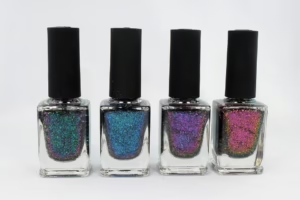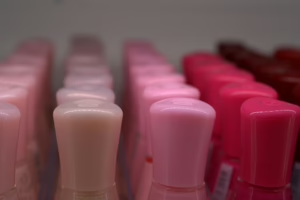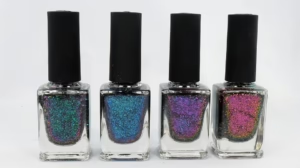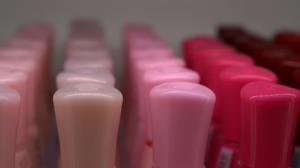Color Psychology: What Your Nail Color Says About You
Color is an essential part of our lives. It influences our emotions, perceptions, and even our identities. In the realm of beauty, nail color is not just a trend; it’s a personal statement. This article delves into the psychology of color, specifically how the color of your nails can reflect your personality, mood, and even social identities. From bold reds to soft pastels, the choices you make can say more than you realize.
The Basics of Color Psychology
Color psychology is the study of how colors affect perceptions and behaviors. Each color resonates with specific emotions and associations, and these can vary across cultures and personal experiences. Here are some foundational concepts:
-
Warm Colors: Colors like red, orange, and yellow evoke warmth, excitement, and energy. They often make people feel more alert and foster a sense of enthusiasm.
-
Cool Colors: Blue, green, and purple tend to be calming and relaxing. They often signify peace, tranquility, and can promote feelings of restfulness.
-
Neutrals: Black, white, gray, and brown are often seen as versatile colors that can evoke different emotions based on their context. They can signify stability and elegance, but also emptiness or sadness in certain scenarios.
These psychological effects can manifest in various aspects of life, including nail color.
Nail Color and Personality
1. Red Nails: Confidence and Passion
Red is arguably the most attention-grabbing color. It’s often associated with confidence, passion, and excitement. When you wear red nails, you’re likely making a bold statement. People who opt for red are often seen as assertive, outgoing, and self-assured. This color is popular for significant events, such as dates and job interviews, as it can exude an air of power and allure.
Case Example: The Power of Red
A study conducted by sociopsychologist Andrew Elliott found that when men were shown images of women with red lipstick, they rated them as more attractive and approachable than those wearing nude shades. This reflects the influence of red on perceptions of desirability and confidence.
2. Pink Nails: Femininity and Playfulness
Pink is often associated with femininity, love, and romance. It’s a color that signifies sweetness and playfulness. Wearing pink nails can reflect someone who is nurturing, approachable, and friendly.
Insights from Color Theory
In color theory, pink is derived from mixing red and white, which softens the intensity of red while maintaining its passion. This can suggest a balance of strength and gentleness within an individual’s personality.
3. Blue Nails: Calmness and Stability
Blue is linked to tranquility and dependability. People who wear blue nails may be seen as calm, insightful, and trustworthy. This color can evoke feelings of relaxation and is often chosen by those who want to present a serene persona.
Connection to Mood
Blue hues, such as navy or sky blue, can also influence mood positively. In therapeutic settings, blue is frequently used to promote relaxation and reduce anxiety.
4. Green Nails: Balance and Harmony
Green symbolizes balance, nature, and growth. Wearing green nails can suggest that the individual values tranquility and harmony. It resonates with those who are down-to-earth and environmentally conscious.
Cultural Perspectives
In some cultures, green is also associated with renewal and new beginnings. Therefore, opting for this color might reflect a desire for change or an optimistic outlook.
5. Black Nails: Edginess and Mystery
Black is bold and sophisticated, projecting an image of edginess or rebellion. Those who choose black nails may be seen as confident and non-conformist. This color can express individuality and is often favored by those in creative industries.
Symbolism and Associations
Historically, black has also symbolized power and authority, suggesting that individuals donning this nail color want to convey a strong sense of control or independence.
6. White Nails: Purity and Simplicity
White nails can symbolize purity, simplicity, and cleanliness. This color is often associated with new beginnings and fresh perspectives. Those who opt for white nails may be seen as organized and detail-oriented.
A Minimalistic Trend
With the rise of minimalistic trends in both fashion and beauty, white has become a popular nail color that reflects a modern aesthetic. It suggests the wearer appreciates simplicity and elegance.
7. Yellow Nails: Optimism and Cheerfulness
Yellow is the color of sunshine and happiness. People who opt for yellow nails often embrace positivity and joy. This vibrant color can suggest warmth, friendliness, and a carefree spirit.
Psychological Effects
In studies of color perception, yellow is often linked to increased optimism and mental clarity. This makes it a great choice for people looking to project happiness and energy.
Seasonal and Situational Nail Colors
Beyond personal traits, nail color choices can also reflect situational factors such as seasons, trends, and social contexts.
1. Seasonal Trends
Certain colors are more popular in different seasons. For example:
- Spring: Pastels are favored, symbolizing renewal and freshness.
- Summer: Bright and vibrant colors like coral and turquoise are common, reflecting energy and fun.
- Autumn: Earthy tones such as deep reds, browns, and oranges evoke warmth and comfort.
- Winter: Classic colors like dark reds, navy, and metallic shades resonate with festivities and elegance.
2. Occasion-Based Choices
Different occasions can also dictate nail color. For example:
- Weddings: Soft, romantic colors often dominate such settings.
- Parties: Glittery and bold colors are popular choices for celebrations.
- Professional Settings: Neutral or muted colors are generally preferred for a polished appearance.
Nail Colors in Different Cultures
Color meanings can vary significantly across cultures. A nail color that signifies one trait in one culture may mean something different in another.
1. Cultural Interpretations
- Red: While red is seen as a symbol of love and passion in Western cultures, in some Asian cultures, it signifies good luck and prosperity.
- White: In Western societies, white is associated with purity and weddings, while in some Eastern cultures, it represents mourning.
2. Cultural Celebrations
Different cultures have varying festivals and traditions that emphasize specific colors. For instance, during Diwali in India, vibrant colors represent joy and prosperity, which often extends to festivities and personal adornments like nail polish.
Nail Color and Social Identity
Your choice of nail color can also reflect your social identity and subcultures.
1. Trends and Fads
Certain nail colors can signify belonging to a specific demographic. For instance, pastel colors may be more popular among younger millennials, while more traditional colors may resonate with older generations. Similarly, the rise of nail art has become a trend among more creative subcultures.
2. Celebrity Influence
Celebrities have a profound impact on nail color trends. The “Kardashian effect,” for instance, has brought various colors into the limelight, encouraging fans to mimic their styles, often reflecting the celebrities’ perceived personalities.
3. Professional Associations
In professional settings, nail color can impact how you are perceived. For example, office professionals might lean towards muted tones to appear more serious, while creatives may express themselves through more adventurous colors or nail designs.
The Psychology of Nail Art
Beyond color, nail art can add an additional layer of personal expression. Patterns, textures, and styles can communicate individuality.
1. Intricate Designs: Creativity and Attention to Detail
People who choose elaborate nail art often reveal a penchant for creativity and individuality. These designs may suggest a willingness to express oneself boldly, and they often attract attention.
2. Simple Styles: Minimalism and Classic Taste
On the other hand, minimalist nail styles can indicate a preference for simplicity and a classic aesthetic. This choice may reflect an organized mindset and a desire for an understated elegance.
3. Nail Shapes: Personal Identity in Detail
Nail shape can also contribute to one’s identity. For example, long, almond-shaped nails may signal a more glamorous or fashion-forward identity, while shorter, rounded nails can reflect a practical and no-nonsense persona.
Conclusion: The Color of Self-Expression
Your choice of nail color is more than just an aesthetic decision; it’s a reflection of your emotions, personality, and even your social identity. While the psychology of color provides a framework for understanding these choices, individual interpretations and cultural contexts add depth and nuance to what your nails say about you. Whether you prefer daring hues or soft pastels, remember that your nails can be a vibrant canvas for self-expression.
References
- Elliott, Andrew. “The Color Red Increases Women’s Attractiveness.” Social Psychology, vol. 40, no. 1, pp. 19–22, 2009.
- Dressel, Jan, et al. “Color Preferences and Affective Responses in Color Psychology.” Journal of Psychology, vol. 154, no. 3, pp. 255–275, 2018.
- Kuller, R., et al. “Effects of Color on the Mood and Performance of Housing Occupants.” Lighting Research & Technology, vol. 31, no. 3, pp. 137–143, 1999.
- Valdez, P., and Mehrabian, A. “Effects of Color on Emotions.” Journal of Applied Psychology, vol. 75, no. 6, pp. 739–743, 1990.
This article not only captivates the current trends but also provides insights into how something as simple as nail color can have far-reaching implications in understanding ourselves and how we are perceived by society. It prompts readers to think beyond the surface and appreciate the psychological facets of color selection, particularly in personal expression through nail art!


























Add Comment